In 1999, when the Lake Erie watersnake was listed as federally threatened, fewer than 2,000 adults remained on the planet. Recovery efforts haven’t slowed since its delisting in 2011. Now there are at least 10,000 adults.
It’s hard enough to save wildlife the public perceives as “adorable,” like island foxes or “beautiful” like loons. But how do you save creatures the public perceives as “repulsive”? And how do you do it in barely more than a decade? The answers that follow provide a model for how managers need to apply the Endangered Species Act. But first, some history.
The Lake Erie watersnake is restricted to the lake’s western basin on “Islands of the Snakes,” named by French explorers who encountered watersnakes by the thousands “sunning themselves in heaps, knots, and snarls.”
This subspecies of northern watersnake is long, thick and dark and, even by snake standards, ill-tempered. Pick one up, and it’s apt to bite you, doing no real damage but spreading its jaws to pit-viper width. Then it may hose you down with excreta laced with vile-smelling musk.
Lake Erie watersnakes were frequently killed because they were mistaken for rattlesnakes or copperheads; but this was aberrant behavior. More often they were killed because they were mistaken for water moccasins. When properly identified they were killed for being “ugly.”
Early island settlers released pigs in a successful effort to reduce watersnakes. In 1937 Roger Conant, curator of herpetology at the Toledo Zoo, found snakes on some islands, but none on a formerly productive one. A proud resident of that island offered this explanation: “It shows how efficient we have been in getting rid of snakes.”
The snakes, rare even in Conant’s day, decreased ten-fold from the 1950s to the 1980s. In 1986 it took Dr. Richard King of Northern Illinois University a month to find as many as Conant had found in a day. That convinced the U.S. Fish and Wildlife Service to make the subspecies a candidate for Endangered Species Act protection.
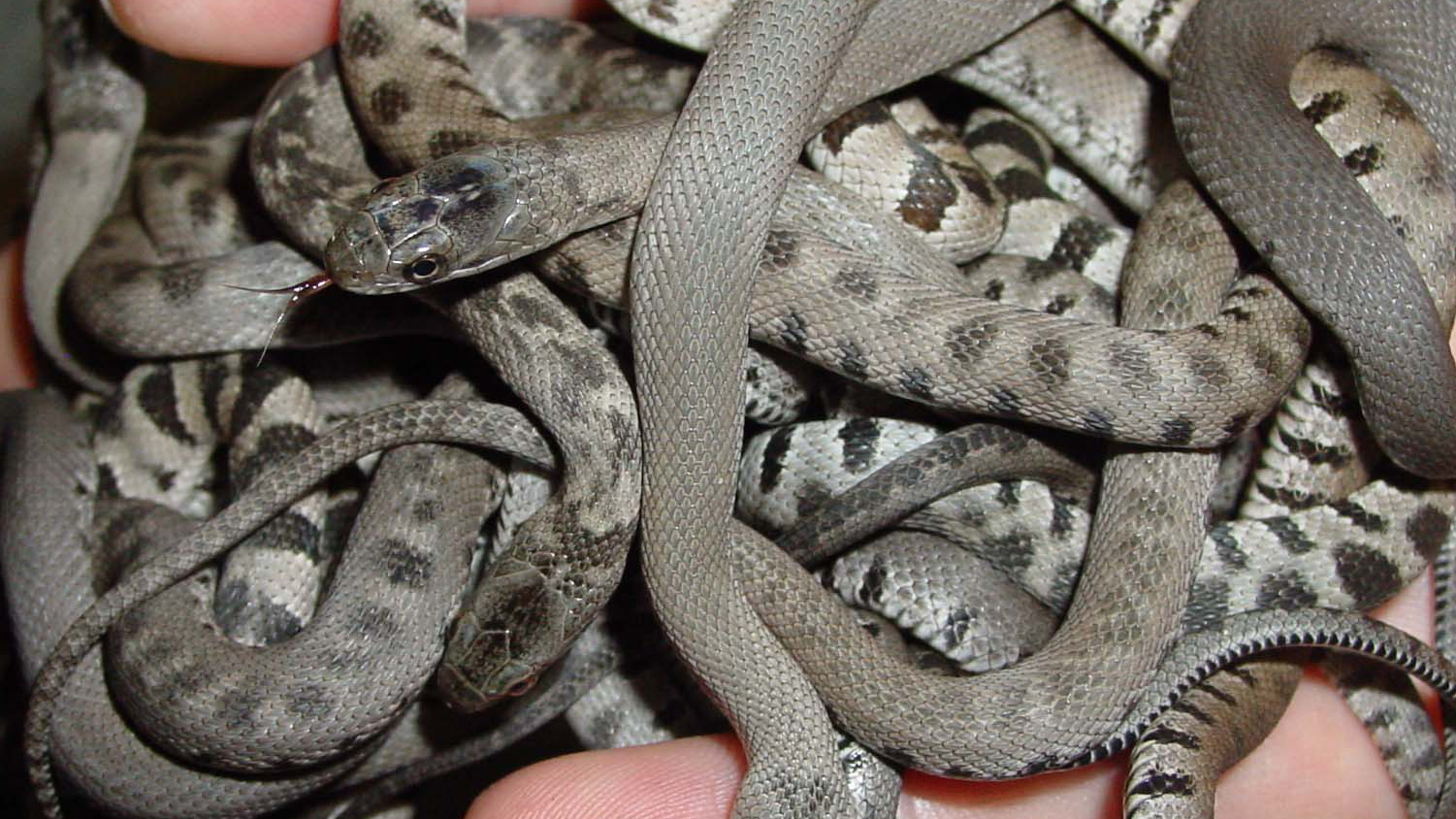
But the killing continued. In high summer females, heavy with live young, basked languidly on rocks, making easy targets. Easier targets were the balled-up mating congregations in spring, easier still the logy, hibernating congregations uncovered during off-season yard work. Islanders bragged about dousing them with gasoline and lighting them on fire or dicing them with shovels.
The snake has clearly benefited from major habitat protection by state, federal and private grants and partnerships including the Ohio DNR, the U.S. Fish and Wildlife Service and grass-roots conservation organizations like the Black Swamp Conservancy and The Nature Conservancy. But natural habitat hasn’t been the whole story or even the main story.
Dr. Kristin Stanford, Education and Outreach Coordinator for Ohio State University’s Stone Laboratory, was a grad student helping King with a study of Lake Erie watersnakes from 2000 until completing her doctoral dissertation under his direction in 2012. In that document she notes that one might expect North Bass Island, the largest of the four uninhabited Ohio islands and with least shoreline disturbance, to have the most watersnakes. Instead, it has the fewest.
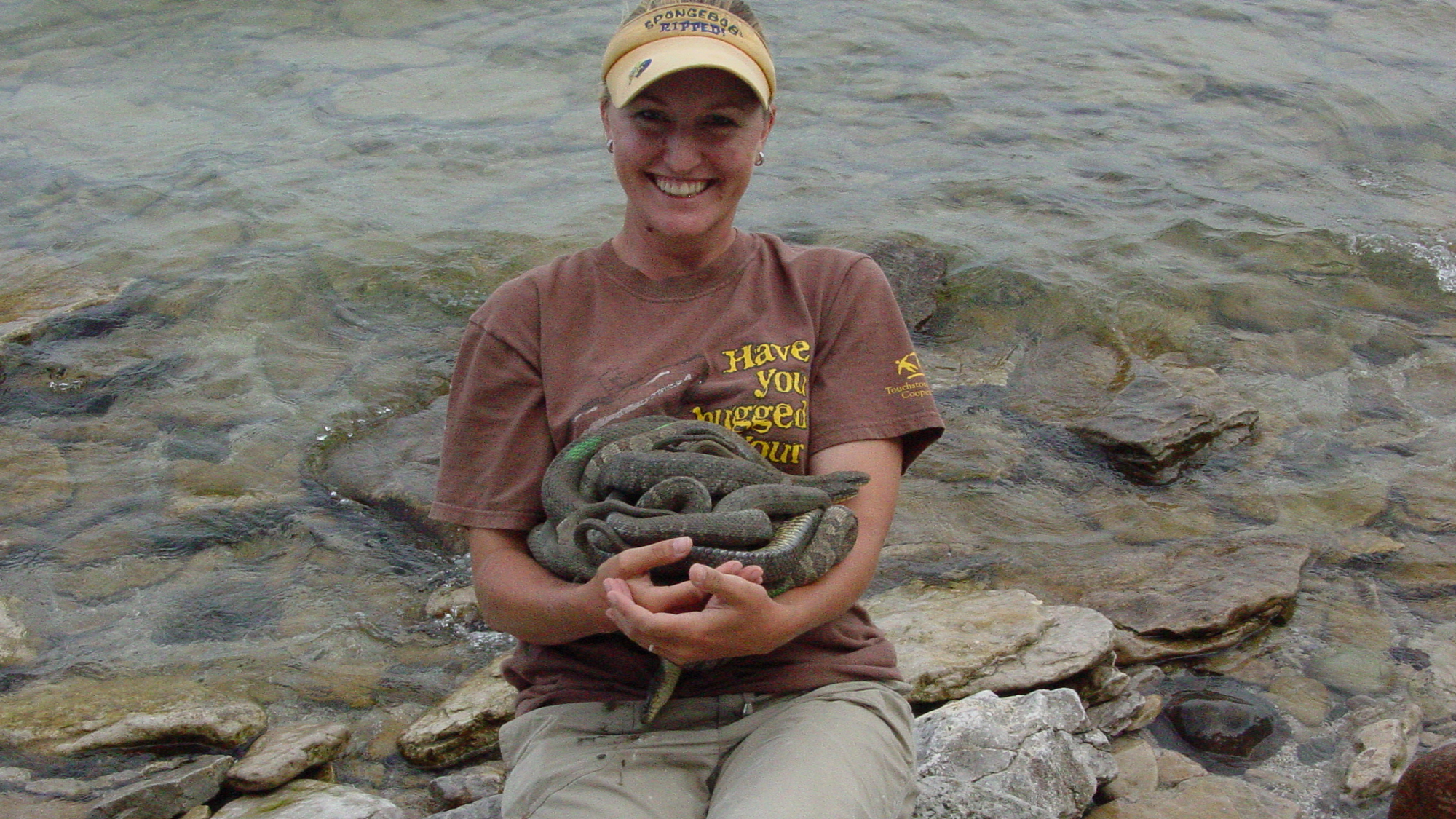
“Could this indicate that habitat destruction is less a limiting factor than human persecution?” I asked her.
“Absolutely,” she replied, “Watersnakes are quite tolerant of disturbance as long as they have some of their needs met — shelter sites where they can hide from predators, good foraging habitat, and nearby hibernation habitat. We see them all the time around limestone-boulder jetties.”
In 1999 the U.S. Fish and Wildlife Service and the Ohio Division of Wildlife started stumping for watersnake protection by meeting with landowners and distributing signs, brochures and newsletters. But the agencies needed a person who could make the public understand the science — someone smart, pleasant, patient, enthusiastic, thick-skinned and likable. That person, already on the islands doing snake research, was Stanford.

“I fell in love with the recovery project,” she says. “I saw this massive communication void. People were frustrated; they had questions and concerns. They didn’t know who to talk to. I think a lot of recovery programs are lacking in that they don’t have that one person able to mediate between agencies and the public. I could have had the best research, but if I left someone’s yard with them not understanding what we were doing, it didn’t matter. This is less about data and more about people. That was the epiphany I had as a grad student. I threw my heart and soul into education. I think that’s what helped us make a difference.”
Kate Parsons, the Ohio Division of Wildlife’s endangered species coordinator, assesses Stanford as follows: “She’s unique. She has a strong science background; she knows how to create good research projects and conservation plans; and she has great people skills. She’s so personable that everyone wants to talk to her.”
Stanford hatched a “Respect the Snake” website, hosted radio shows and wrote a regular newspaper column — “Ask the Snake Lady.” With the help of 20 colleges, five state agencies, three federal or provincial agencies, three regional herpetological societies, three nature centers and island residents she set up workshops, programs at schools and nature camps, information booths and distributed shirts, stickers, magnets and other save-the-snake gewgaws with all proceeds going to watersnake recovery. The torrent of signs (like “Water Snakes Welcome Here”) and brochures (like “A Lake-Shore Property Owner’s Guide to Living With Lake Erie Watersnakes”) intensified. The Snake Lady’s outreach effort even attracted the attention of the Discovery Channel which filmed her field work for its “Dirty Jobs” program with host Mike Rowe properly bitten and pooped on.
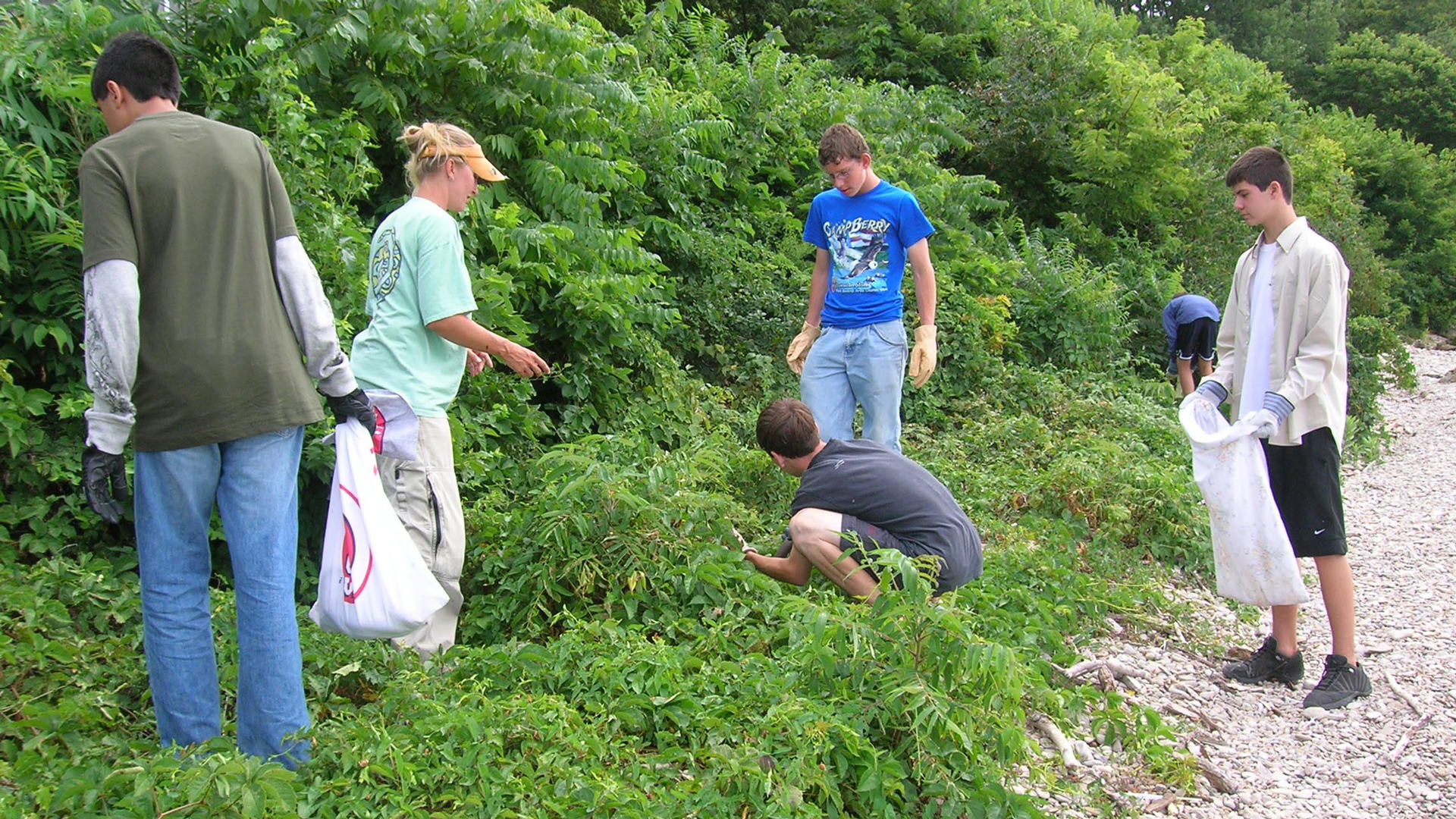
Stanford got students excited about finding watersnakes, and taught them that these animals are part of their island heritage. Parents who killed snakes or even badmouthed them got lectured by their children.
“Kristin embraced the snake and the islanders (literally and figuratively), grabbing watersnakes by the handfuls while chatting with islanders about snake biology, life history, and significance,” remarks Megan Seymour, the U.S. Fish and Wildlife Service’s Lake Erie Watersnake recovery coordinator. “She created a sea change in how people think about snakes.”
Ironically, Lake Erie watersnake recovery is getting a boost from an otherwise destructive alien invader — the round goby, a small fish transported in tanker ballast water from the Black and Caspian Sea regions and which exploded in the lake about the time the snake was listed. Stanford has documented a shift in the snake’s diet to mostly round gobies and a corresponding surge in survival, reproduction and growth.
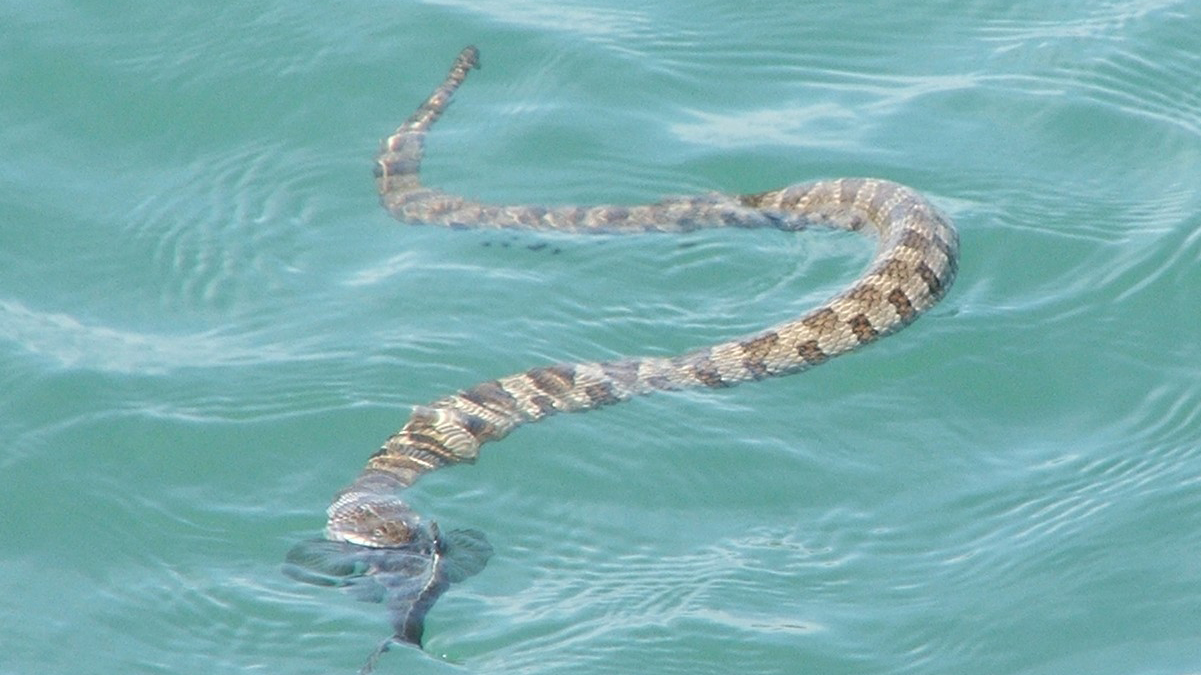
Three surveys of public attitudes about Lake Erie watersnakes — in 1999, 2008 and 2014 — tell a fascinating story. There hadn’t been much outreach before 1999, yet in that survey there was only one negative comment: “I don’t like snakes.” Typical of others that year were: “If the snakes can live with me, I can live with them” and “I’ll do anything to help!” In 2008 a full third of the comments were negative. For example: “Since the beginning of time, snakes have been man’s enemy; read the bible” and “The Snake Lady and the wildlife people have [kept] more and more people from swimming.” There were some negative comments in 2014 (like “I hate all snakes”), but a sharp decline from 2008. What does it all mean?
In 1999 there were essentially no snakes to offend anyone. In 2008, with recovery underway, there were lots; they’d even taken to basking in boats. In 2014 there were even more snakes, but the Snake Lady had been reaching islanders. Some of the negative 2014 comments had a positive component as in: “Not a big fan of snakes but have learned to tolerate them and understand their role in our ecosystem.” And: “I do not like snakes. I would not deliberately destroy.”
Getting people to love or even like the Lake Erie watersnake was never one of the outreach goals. Stanford quotes a current mantra: “I’m so sick of hearing about the Snake Lady and her damned snakes.”
“That’s fine with me,” she says. “Most people still don’t like watersnakes, but at least they’re not killing them anymore.”
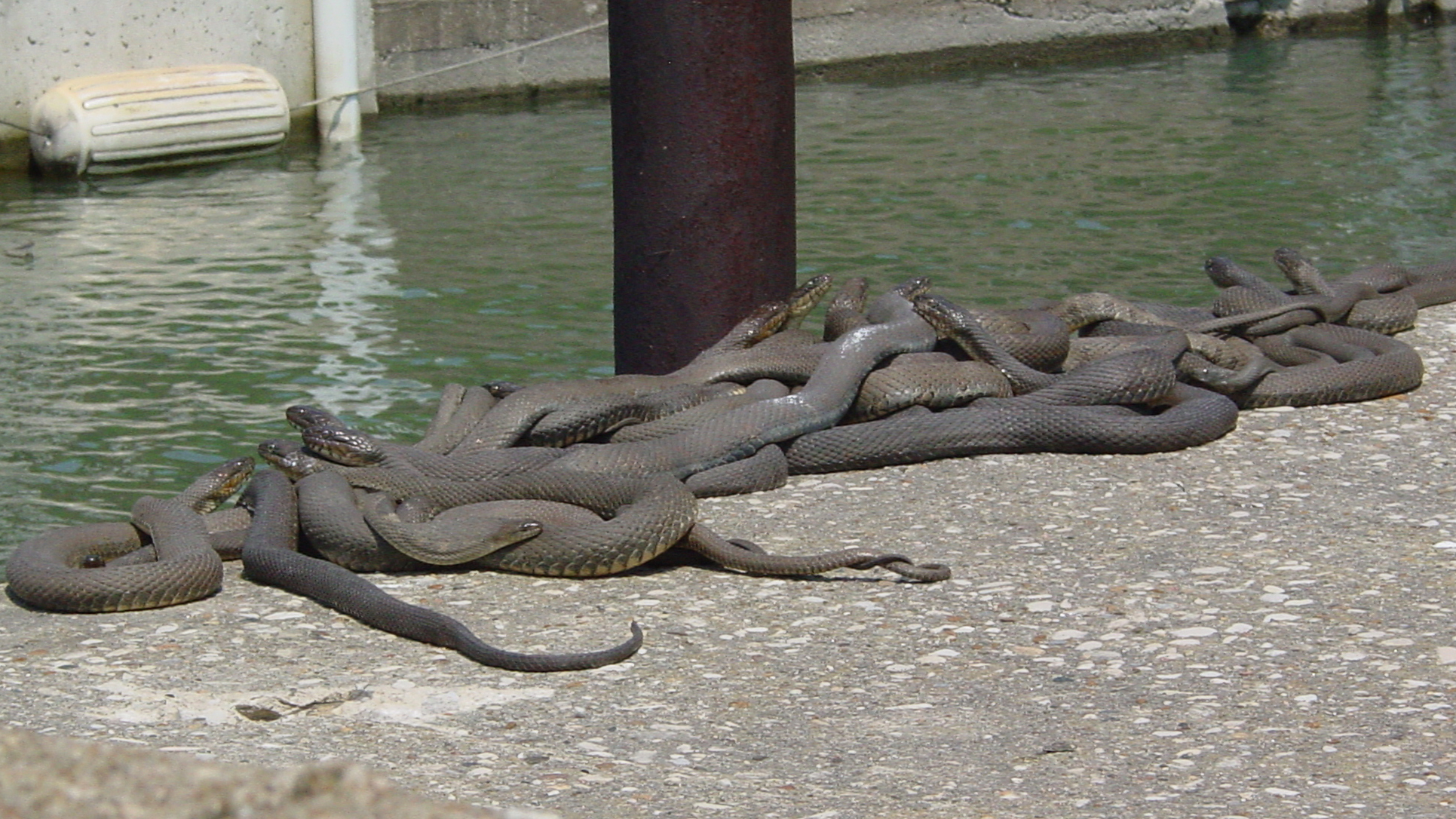
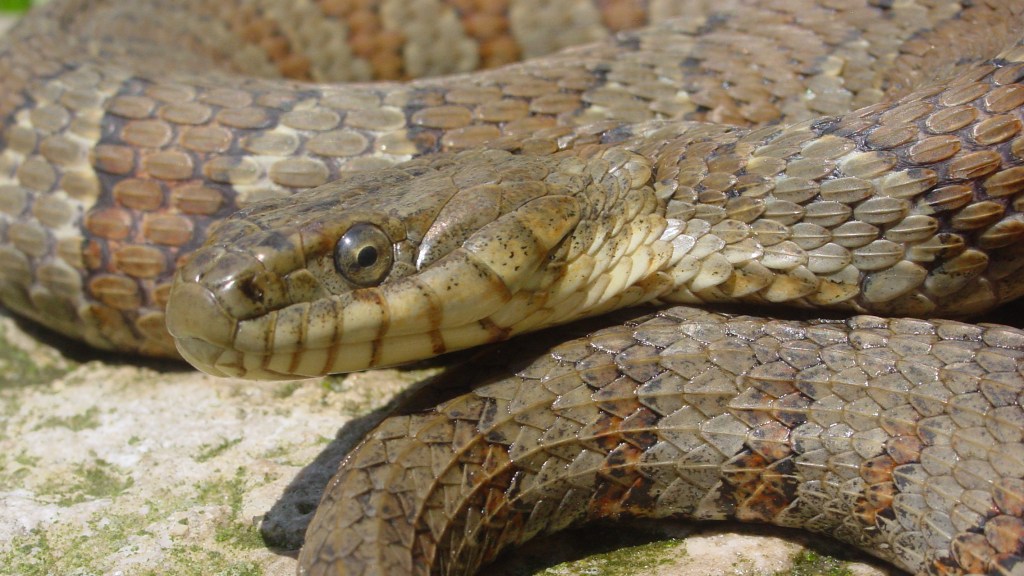



Found what appears to be a lake erie watersnake– a little over 3 ft. long – eating a fish. Found at Harpersfield covered bridge. Got pictures.
Are these Lake Erie water snakes the same ones that we have seen in the Black River at Day’s Dam. We have seen them in the trees and on the walking paths at day’s dam where they sun bathe on the paths in the early morning?!
Greetings, Where and what time of year do the snakes give birth? Do they care for their young? Thank you.
I don’t know why people don’t like snakes ,I keep telling people how much they do for mankind. In our area (the Eastern OH ) we have Black Racers They are fun to watch they even play in the water swimming and bathing. I discourage any one whom I talk with when snakes are talked about not to harm them.
I am not as afraid of snakes as I used to. Same with spiders. I think I have a Black Rat living under my front porch. I am hoping it will take care of some of the little chipmunks burrowing
around my house. We need diversity among all creatures. John Muir believed there was a place for all life, no matter what species.
BeccaBird
Federal Protection and the public campaign were huge for the LEWS. I would also note that the clearing of the water by zebra mussels and the goby explosion coincides suspiciously with the rebound in snake numbers. Keep up the conservation work Stone Lab!
I think this is great work and I support it hardheartedly. It has motivated me to give more support to the Nature Conservancy!
Thank you SO much for this article. I teach a 2nd year vertebrate diversity course and struggle to find positive stories to share with the undergraduates; something that shows them how they CAN make a change for the better. Dr. Stanford’s outreach just joined Shark Truth for my top 2 examples!
Thank you Deborah! For conservation success stories, I think you would be interested in Ted’s entire “Recovery” series: https://blog.nature.org/profiles/ted-williams/
For another example of great outreach success (and, snakes as it happens), check out David Steen’s blog, Living Alongside Wildlife: http://www.livingalongsidewildlife.com/
Excellent article! I enjoy snacks myself. Like the Goby angle.
Nice to see such coverage of Kristin’s work with Lake Erie water snakes, and fabulous that she has had the support of so many agencies and other organizations in her work. Thanks for such a positive article about snakes and about people working with snakes! My doctoral work was on the human dimensions of rare rattlesnake conservation in the upper Midwest USA, specifically Eastern Massasaugas and Timber Rattlesnakes. In the survey work that I conducted in Michigan and Minnesota, respondents were more positive than negative about non-venomous snakes and rattlesnakes. The big difference in the degree of acceptance had to do with the potential danger presented by rattlesnakes, something that most people greatly over-estimated.